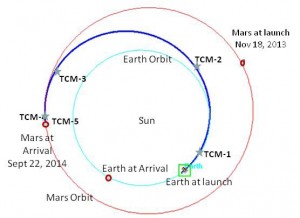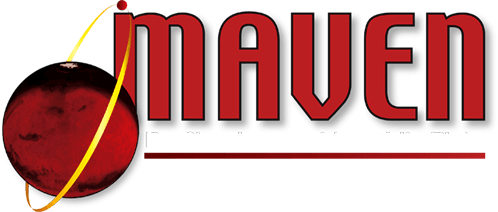
On Feb. 26, mission controllers performed a successful second trajectory correction maneuver, also known as TCM-2. Post-maneuver data review shows that TCM-2 went according to plan. This burn lasted approximately 19 seconds and imparted a change in velocity of 68.8 centimeters per second (1.54 mph). The maneuver was used to adjust the “aim point” of MAVEN at its closest approach when it arrives at Mars, so that it can properly enter orbit around the planet. All spacecraft systems continue to show nominal performance. TCM-1 occurred on Dec. 3, 2013. TCM-3 is scheduled for July 23.
Upcoming events in March include continuing calibrations and checkouts of various instrument and spacecraft systems. MAVEN is at a distance of 21.2 million kilometers (13.2 million miles) from Earth and 103.7 million kilometers (64.4 million miles) from Mars. The current velocity is 29.44 kilometers per second (65,855 mph) as it moves around the Sun.
MAVEN’s principal investigator is based at the University of Colorado Boulder’s Laboratory for Atmospheric and Space Physics in Boulder, Colo. The university provided science instruments and leads science operations, as well as education and public outreach, for the mission. NASA’s Goddard Space Flight Center in Greenbelt, Md., manages the project and provided two of the science instruments for the mission. Lockheed Martin Space Systems in Denver built the spacecraft and is responsible for mission operations. The University of California at Berkeley’s Space Sciences Laboratory provided science instruments for the mission. NASA’s Jet Propulsion Laboratory, a division of the California Institute of Technology in Pasadena, Calif., provides navigation support and Deep Space Network support, in addition to the Electra hardware and operations.
[addthis]

